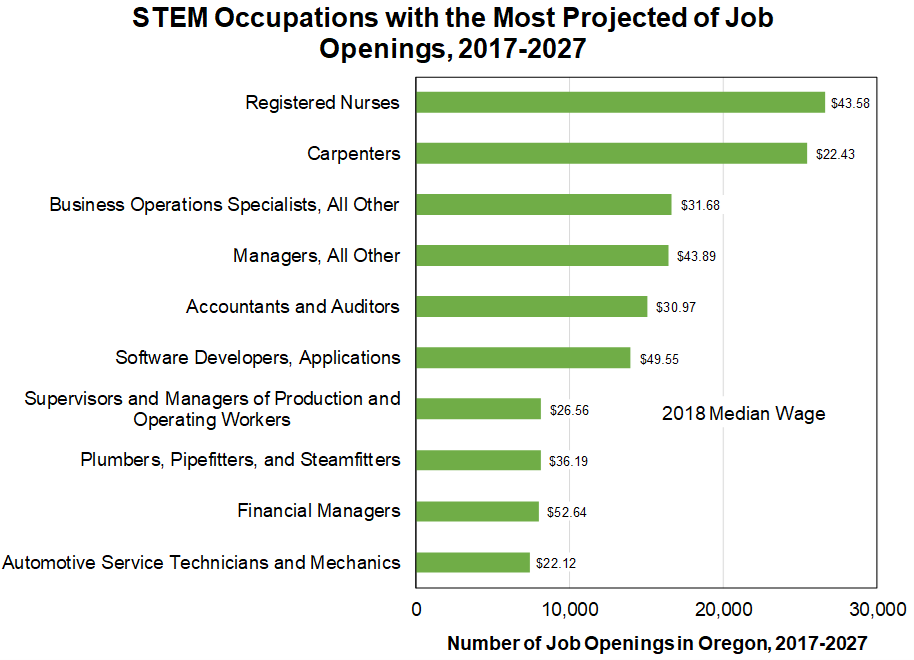Twenty-two percent of jobs in Oregon fall into the STEM category (science, technology, engineering, and mathematics). You can view the relationship between employment and wages of STEM occupations in the chart-based STEM Employment and Wage Tool.
Most STEM jobs require education and training to learn the skills and
knowledge for the job. The typical entry-level education for almost
three-quarters (71.3%) of STEM job openings is postsecondary training or
higher. Nearly half (47.3%) of STEM job openings require a bachelor’s
degree.
Looking at all projected job openings in Oregon, 76 percent of openings
that require a doctoral or professional degree are STEM jobs. Forty-nine
percent of openings that require a bachelor’s degree and 60 percent
that require an associate’s degree are STEM jobs.
More than 400,000 job openings due to both growth in the occupation and
the need to replace workers who leave the occupation (for retirement, or
move to another type of work, for example) are expected from 2017 to
2027. The growth rate for STEM jobs during this period is 15 percent,
which is higher than the growth rate for all occupations of 12 percent.
Only 19 out of 286 STEM occupations are expected to decline during the
decade.
The Oregon Employment Department has wage data available for 257 of the
286 STEM occupations analyzed in this blog post. Of these 257 STEM
occupations, 235 occupations have a higher median wage than Oregon’s
median wage for all occupations ($19.09 per hour) in 2018.
For more information on STEM occupations, read the full article written by Economist Anna Johnson.

No comments:
Post a Comment